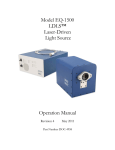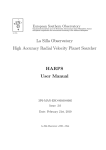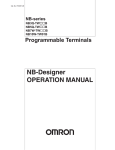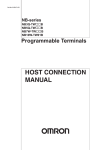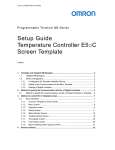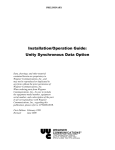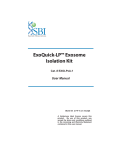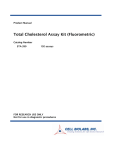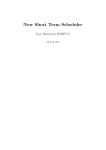Download User Manual (v1.1) for the New Short Time Scheduler (NSTS)
Transcript
! ! ! ! ! ! ! ! ! User manual for the New Short Term Scheduler (NSTS) for SOPHIE ! Version 1.1 - July 7, 2014 - francois.bouchy @ lam.fr (english version [email protected]) ! ! ! ! ! ! ! ! Computer and Architecture of the directories ! Computer sophiests-2.obs-hp.fr Login: sophiests Password: same as for the other PC SOPHIE /home/sophiests/NSTS/NSTS.jar main program /home/sophiests/NSTS/lists/ directory of the predefined lists /home/sophiests/NSTS/catalogs/ directory of the catalogs /home/sophiests/NSTS/LOGS/ directory of the LOGs ! Check that the time of the NSTS PC is the UTC. ! ! Launching the program ! Launch the NSTS by double clicking on the icon on the desktop Or from the command window: > java -jar /home/sophiests/NSTS/NSTS.jar ! Select the SOPHIE instrument (default option) ! Select "Offline" if the GO SOPHIE PC program is not running Select "Online" if the GO SOPHIE PC program is launched ! Do not operate simultaneously the former STS and NSTS ! ! The "ETC (Exposure Time Calculator) Only" tool is still in development. ! The next option allows you to store the logs: > java -jar /home/sophiests/NSTS/NSTS.jar 2> /home/sophiests/NSTS/FBD/file ! ! ! ! ! Overview ! The right window, which contains all the descriptors, can be adjusted in size and even completely hidden. The only editable parameters in the right window are SNR, Comment, CCD.READMODE, CCD.UIT and TPL.EXP. They are under the tabs [Template] [MAIN PARAMETERS]. ! The fields (ID, name, Target, Alpha, ....) of the left window can be resized for easy reading. The [OPTIONS] Preferences sets the maximum exposure time [Max Texp] and a multiplicate factor of exposure time [Texp Mult Factor]. Directories [catalogs] and [lists] are predefined. It is not recommended to change them. One can select the columns from the left window to show or hide (Delta, Magnitude, Computed SNR, .....). ! ! Calibrations ! The SOPHIE standard calibrations are predefined in a list: [File] Open List or via the icon ! ! . Enter the directory CALIBRATIONS. Then select the “Calib_NewUC_HE_*” or “Calib_NewUC_HR_*” list. The * could be TUN or LDLS depending on availability of the white lamp. Don’t worry about that. ! To insert a calibration: ! [File] Insert OB or via the icon ! Then select OB_Calibration. Then [File] Insert Template and select one of the following calibration: OB_cal_bias / OB_cal_dark / OB_HR_cal_tun1A / OB_HR_cal_tun1B / OB_HR_cal_tun1AB / OB_HR_cal_LDLSA / OB_HR_cal_LDLSB / OB_HR_cal_LDLSAB /OB_HR_cal_thoAB1 / OB_HR_cal_thoAB2 / ! ! ! Scientific exposures through a catalog ! Open a catalog with [File] Open Catalog or via the icon ! The catalogs are by default in /home/sophiests/NSTS/catalogs/ ! ! Error message An error message appears when the catalog has a wrong format (“Bad size in the input catalog”). One should edit the catalog (gedit) and check the tabs (including unnecessary end of line) and empty lines (including those useless at the end of the file). You can also open a catalog in the correct format (e.g. example_cat.cat) and click on [View Log Book] to access the error messages on the format of the catalog. If some columns are missing or not recognised, the NSTS request validate: "One or more columns do not exists." If none "Mandatory columns" is in red, go to "Other Columns" and check the status of the parameters in red. You can either impose a default value, or assign them a different name. Click on the bottom left [Ok to use defaults on unknown or misspelled optional columns] and [Validate]. ! ! ! ! ! Insert targets When you open the catalog, it is displayed in a new window. One can define which columns to display using [Colums]. One can select one or more targets, then click [SEND]. Avoid the [SEND ALL] that sends the entire catalog. ! Exposure time To change the exposure time and / or the reading mode of the detector, open the OB_SCIENCE with the little arrow on the left or with the icon [Open ALL] ! and select the observation template [SOPHIE_obs]. In the right panel, under the tab [MAIN PARAMETERS], it is possible to change the exposure time [CCD.UIT] and the reading mode of the detector [CCD.READMODE]. ! ! ! ! You can also change the [SNR (at 550 nm)] and use the exposure time calculator with [Options Compute Exp Time] or via the icon ! . Warning: the calculator of exposure time is now approximate but very comparable to the old STS. We may limit the exposure time with the [Options Set Max Exp Time] or via the icon ! ! as defined by default in preference. One can double the exposure time or multiply it by a factor defined in the Preferences via the [Options Multiply Exp Time] or icon ! ! . Acquisition mode You can change the mode of acquisition by selecting the template acquisition [eg HE_obj_objAB] and via [File Change ACQ] HR_obs_thosimult2 / HR_obs_objAB / HR_obs_objA / HE_obs_thosimult2 / HE_obs_objAB / HE_obs_objA or via the icon ! ! ! ! Description of the main menus and icons ! ! Insert an Observation: Especially useful for inserting a predetermined calibration ! Insert a template in a Observation: Little or no useful with SOPHIE ! Edit an acquisition template ! Open Catalog ! Clear a pose ! Duplicate the selected OB ! Opening / Closing Remarks (to display or not the acquisition and the observation template) ! ! Open an existing list and / or a set of standard calibrations ! Save a list ! ! ! ! ! ! Start / Stop communication with SOPHIE GO / Put a pause / Put first the OB selected Change the time of the beginning of the night Calculate the exposure time / Impose maximal exposure time / Multiply the exposure time. ! ! ! Constraints and observational limits ! On the lower band of the NSTS are shown with indicators when it is impossible to observe (red cross), alerts (yellow triangles), or when the conditions are correct (green bar). ! ! ! ! Horizon if secz > 3.8 Airmass if secz > 2.0 Pole if DEC > 88 deg Moon Position if distance < 30 deg Moon Velocity if delta RV < 15 km/s (but do not check if the moon is risen !) ! ! ! Emergency procedure to switch back to the old STS ! Leave the NSTS. Exchange only the DVI cables at the output of the graphics cards of the 2 computers SOPHIESTS and NSTS. Then move the keyboards and mice of both PCs but no need to change screens. Launch STS. ! ! ! Save the night in case of crash of the NSTS ! It happens that the NSTS could close without warning. In that case, we advise the observers to save their programmation of the night. To do this, use the [File Save a list] or the icon ! . In case of crash of the NSTS, it is then just sufficient to upload the saved list. Or it exists a specific option: [File Open Auto Saved List]. ! ! For more details ! The reader can also consult the NSTS user manual of HARPS-North available on the web: http://www.tng.iac.es/instruments/harps/ The system is mainly equivalent. ! ! ----------------------------------------








